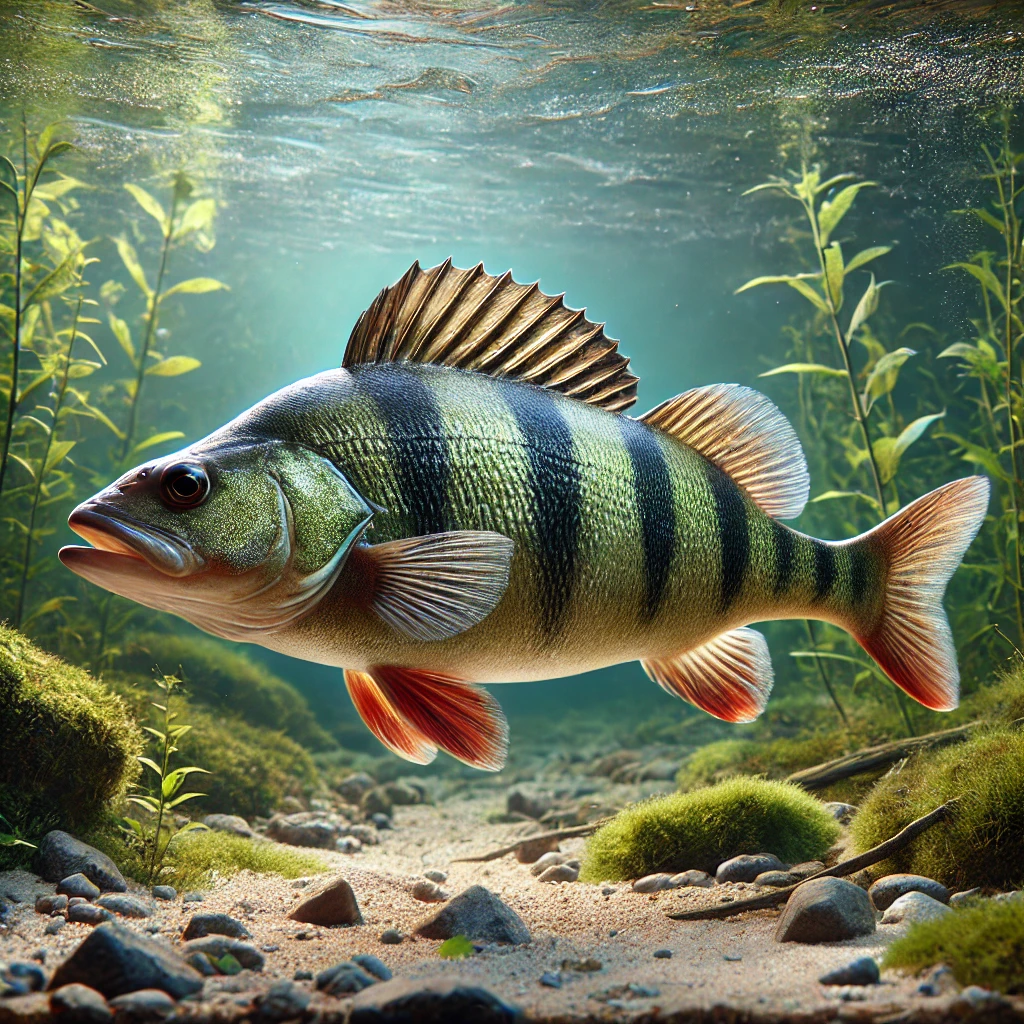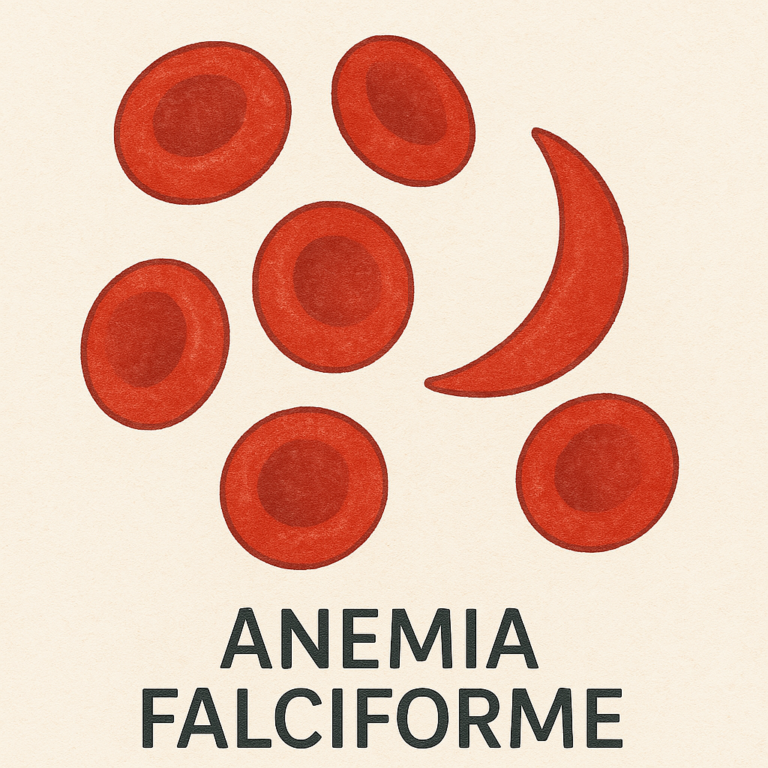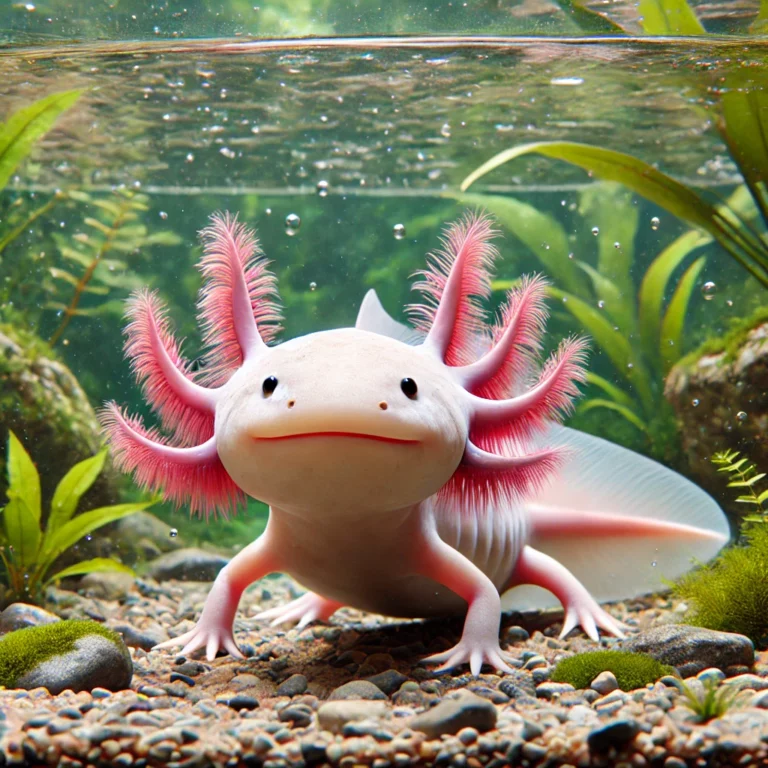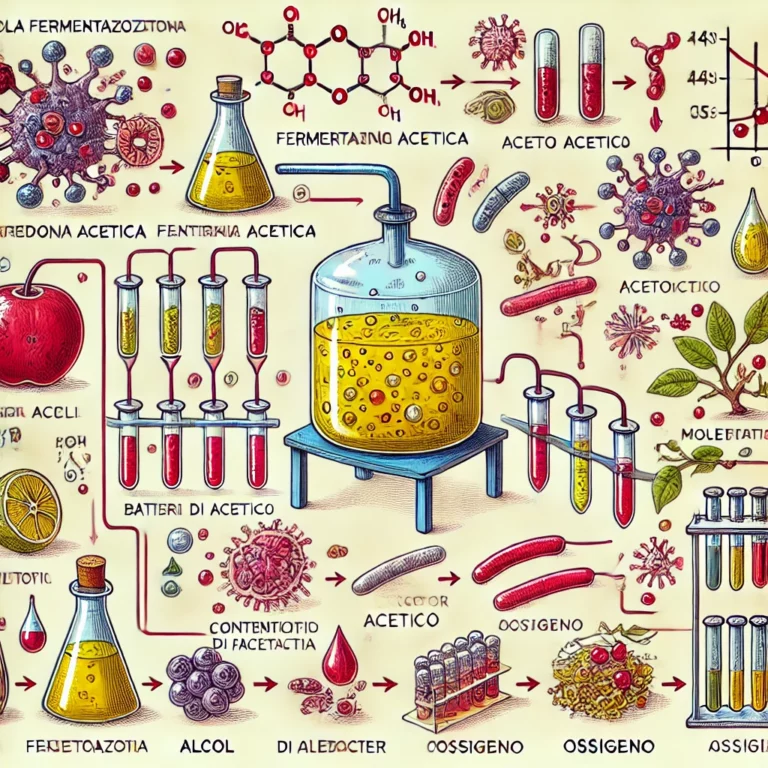Ben ritrovati, amici esploratori! Oggi ci inoltriamo in un territorio affascinante e al tempo stesso preoccupante: il mondo delle specie invasive. Immaginate di passeggiare in un bosco secolare, dove ogni albero, ogni fiore, ogni piccolo animale ha il suo ruolo, un equilibrio perfetto plasmato da millenni di evoluzione. E adesso immaginate che in questo ecosistema arrivi un estraneo, una pianta, un insetto, un animale trasportato dall’uomo da terre lontane…
Proprio come sta accadendo in questo momento nelle acque cristalline dei Caraibi, dove il lionfish, un pesce originario dell’Oceano Indiano e Pacifico, sta mettendo a rischio la barriera corallina. Come riporta il National Geographic, questo predatore vorace, introdotto accidentalmente negli anni ’80, si sta diffondendo a macchia d’olio, decimando le popolazioni di pesci nativi e alterando l’intero ecosistema. Una vera e propria “invasione silenziosa”, che minaccia la biodiversità di uno dei luoghi più belli del pianeta.
Ma cosa sono esattamente queste specie invasive? Potremmo definirle dei “clandestini”, degli organismi che, grazie all’uomo, viaggiano per il mondo – nascosti nelle stive delle navi, negli aerei, o persino nei nostri bagagli – e si insediano in luoghi dove non sono mai stati prima. Non tutti gli “stranieri” però diventano invasori. Per conquistare un nuovo territorio, una specie deve superare delle vere e proprie prove di sopravvivenza: adattarsi al clima, trovare cibo, difendersi dai predatori e, soprattutto, riprodursi con successo.
E quali sono le armi segrete di questi conquistatori? Spesso sono organismi molto adattabili, capaci di vivere in ambienti diversi, si riproducono velocemente, come un esercito che invade ogni angolo disponibile, e non hanno nemici naturali, nessun predatore o parassita che ne limiti la diffusione. Insomma, dei veri e propri “super organismi”! Prendiamo ad esempio il gambero marmorizzato, una specie originaria dell’Asia che si sta diffondendo rapidamente in Europa e Nord America. Come riportato dalla BBC, questo crostaceo, capace di riprodursi per partenogenesi (senza bisogno di maschi!), sta colonizzando fiumi e laghi, competendo con le specie autoctone e mettendo a rischio la biodiversità degli ecosistemi acquatici.
Ma qual è l’impatto di queste invasioni biologiche? Purtroppo, amici miei, le conseguenze possono essere devastanti. Pensate alla perdita di biodiversità: le specie invasive competono con quelle native, le cacciano, le privano del cibo, portandole sull’orlo dell’estinzione. È come se in una città affollata arrivassero improvvisamente migliaia di nuove persone che occupano le case, i negozi, lasciando i vecchi abitanti senza nulla.
E non è tutto. Le specie invasive possono alterare profondamente gli ecosistemi: modificano il paesaggio, stravolgono le catene alimentari, introducono nuove malattie. Pensate al pesce persico del Nilo, introdotto nel Lago Vittoria con l’idea di aumentare la pesca: questo vorace predatore ha decimato le specie locali, causando un disastro ecologico ed economico. O alla zanzara tigre, arrivata dall’Asia, che si è diffusa in tutto il mondo portando con sé malattie come la dengue e la chikungunya. E a proposito di zanzare, un recente studio pubblicato sulla rivista Science lancia l’allarme sulla possibile invasione dell’Europa da parte della zanzara coreana, una specie portatrice di virus pericolosi come l’encefalite giapponese. Il cambiamento climatico, con l’aumento delle temperature, potrebbe favorire la diffusione di questo insetto, con gravi rischi per la salute pubblica.
E con i cambiamenti climatici in atto, la situazione rischia di peggiorare. L’aumento delle temperature, la siccità, gli eventi meteorologici estremi favoriscono la diffusione delle specie invasive, rendendo gli ecosistemi ancora più vulnerabili. Un esempio? Il granchio blu, originario delle coste atlantiche americane, sta proliferando nel Mediterraneo, mettendo a rischio la pesca e l’acquacoltura. Come riporta il Guardian, questo crostaceo aggressivo, favorito dall’aumento delle temperature del mare, sta causando ingenti danni economici e ambientali.
Ma non dobbiamo disperare! Possiamo ancora agire per contrastare questa minaccia. Innanzitutto, con la prevenzione: controlli più rigorosi alle frontiere, norme più severe sul trasporto di animali e piante, e soprattutto, una maggiore consapevolezza da parte di tutti noi. Ricordiamoci, amici, che anche un piccolo gesto può fare la differenza: non abbandoniamo animali domestici in natura, scegliamo piante autoctone per i nostri giardini, informiamoci sui rischi delle specie invasive.
E poi, la ricerca scientifica: studiare il comportamento di questi invasori, capire come interagiscono con l’ambiente, sviluppare nuove strategie per contenerli.
La lotta alle specie invasive è una sfida globale, che richiede la collaborazione di tutti: scienziati, istituzioni, cittadini. Dobbiamo proteggere la biodiversità del nostro pianeta, preservare questo meraviglioso mosaico di vita che ci circonda. Perché, come diceva un grande saggio, “la natura non fa niente invano”.
E con questo, amici miei, vi saluto, con la speranza di avervi trasmesso la passione per la conoscenza e la consapevolezza dell’importanza di proteggere il nostro pianeta. Alla prossima avventura!
Riferimenti Bibliografici
- Adams, M. J., C. A. Pearl, and R. B. Bury. 2003. “Indirect facilitation of an anuran invasion by non-native fishes.” Ecology Letters 6: 343–351.
- Aday, D. 2007. “The presence of an invasive macrophyte (Phragmites australis) does not influence juvenile fish habitat use in a freshwater estuary.” Journal of Freshwater Ecology 22: 535–537.
- Agostinho, A. A., L. C. Gomes, S. Verı́ssimo, and E. K. Okada. 2004. “Flood regime, dam regulation and fish in the Upper Paraná River: effects on assemblage attributes, reproduction and recruitment.” Reviews in Fish Biology and Fisheries 14: 11–19.
- Agostinho, A. A., F. M. Pelicice, and L. C. Gomes. 2008. “Dams and the fish fauna of the Neotropical region: impacts and management related to diversity and fisheries.” Brazilian Journal of Biology 68: 1119–1132.
- Allan, J. D. 2004. “Landscapes and riverscapes: the influence of land use on stream ecosystems.” Annual Review of Ecology, Evolution, and Systematics 35: 257–284.
- Allan, J. D., and M. M. Castillo. 2007. Stream Ecology: Structure and Function of Running Waters. 2nd ed. Dordrecht: Springer.
- Alkemade, R., M. Oorschot, L. Miles, C. Nellemann, M. Bakkenes, and B. ten Brink. 2009. “GLOBIO3: A Framework to Investigate Options for Reducing Global Terrestrial Biodiversity Loss.” Ecosystems 12:374–390.
- Allouche, O., A. Tsoar, and R. Kadmon. 2006. “Assessing the accuracy of species distribution models: prevalence, kappa and the true skill statistic (TSS).” Journal of Applied Ecology 46:1223–1232.
- Amalfitano, S., M. Coci, G. Corno, and G. M. Luna. 2015. “A microbial perspective on biological invasions in aquatic ecosystems.” Hydrobiologia 746: 13–22.
- Anonymous. 2018. “https://www.euronews.com/2018/02/02/rising-sea-levels-threat-a-shrinking-european-coastline-in-2100”
- Anonymous. 2021. “Special Issue. Global decline in the Anthropocene.” Proc Natl Acad Sci, USA 118: No 2.
- Araújo, M. B., and M. New. 2007. “Ensemble forecasting of species distributions.” Trends in Ecology & Evolution 22:42–7.
- Aquilera, R., T.W. Curringham, A. Gershunov, and T. Benmarhnia. 2021. “Wildfire smoke impacts respiratory health more than fine particles from other sources: observational evidence from Southern California.” Nat. Commun. https://doi.org/10.1038/s41467-021-21708-0
- AR6 Climate Change. 2021. The sixth assessment report on climate change. IPCC, Geneva. https://www.ipcc.ch/report/ar6/wg1/
- Balian, E. V., H. Segers, C. Lévèque, and K. Martens. 2008. “The freshwater animal diversity assessment: an overview of the results.” Hydrobiologia 595: 627–637.
- Banks, C. M., and I. C. Duggan. 2009. “Lake construction has facilitated calanoid copepod invasions in New Zealand.” Diversity and Distributions 15: 80–87.
- Barbet-Massin, M., F. Jiguet, C. H. Albert, and W. Thuiller. 2012. “Selecting pseudo-absences for species distribution models: how, where and how many?” Methods in Ecology and Evolution 3:327–338.
- Bartholomé, E., and A. S. Belward. 2005. “GLC2000: a new approach to global land cover mapping from Earth observation data.” International Journal of Remote Sensing 26:1959–1977.
- Bates, A. E., C. M. McKelvie, C. J. B. Sorte, S. A. Morley, N. A. R. Jones, J. A. Mondon, T. J. Bird, and G. Quinn. 2013. “Geographical range, heat tolerance and invasion success in aquatic species.” Proceedings of the Royal Society B: Biological Sciences 280: 20131958.
- Beckage, B., B. Osborne, D. G. Gavin, et al. 2008. “A rapid upward shift of a forest ecotone during 40 years of warming in the Green Mountains of Vermont.” Proc. Natl. Acad. Sci. USA 105, 4197–4202. https://doi.org/10.1073/pnas.0708921105
- Beckman, N.G., C.E. Aslan, and H.S. Rogers. 2020. “The role of seed dispersal in plant populations: perspectives and advances in a changing world.” AoB Plants. https://doi.org/10.1093/aobpla/plaa010
- Beisner, B. E., P. R. Peres-Neto, E. S. Lindstrom, A. Barnett, and M. L. Longhi. 2006. “The role of environmental and spatial processes in structuring lake communities from bacteria to fish.” Ecology 87: 2916–2929.
- Bellard, C., P. Cassey, and T. M. Blackburn. 2016. “Alien species as a driver of recent extinctions.” Biol Lett. 12:20150623.
- Bij de Vaate, A., K. Jazdzewski, S. Kettunen, A. Gollasch, J. G. Van Der Velde, and E. V. Balian. 2002. “The first finding of the Ponto-Caspian invader, Dikerogammarus villosus (Sowinsky, 1894) (Crustacea, Amphipoda), in the Rhine in 2001.” Aquatic Invasions 17: 149–159.
- Bilton, D. T., J. R. Freeland, and B. Okamura. 2001. “Dispersal in freshwater invertebrates.” Annual Review of Ecology and Systematics 32: 159–181.
- Blokesch, M., and G. K. Schoolnik. 2007. “Serogroup conversion of Vibrio cholerae in aquatic reservoirs.” PLOS Pathogens 3: 733–742.
- Bobeldyk, A. M., J. Rüegg, and G. A. Lamberti. 2015. “Freshwater hotspots of biological invasion are a function of species-pathway interactions.” Hydrobiologia 746: 363–373.
- Boltovskoy, D., N. Correa, D. Cataldo, and F. Sylvester. 2006. “Dispersal of the Asian clam Corbicula fluminea in South America.” Biological Invasions 8: 1653–1663.
- Boyce, M. S., P. R. Vernier, S. E. Nielsen, and F. K. Schmiegelow. 2002. “Evaluating resource selection functions.” Ecological Modelling 157: 281–300.
- Bradley, B. A., B. B. Laginhas, R. Whitlock, J. M. Allen, A. E. Bates, G. Bernatchez, J. M. Diez, R. Early, J. Lenoir, M. Vilà, and C. J. B. Sorte. 2019. “Disentangling the abundance-impact relationship for invasive species.” Proc Natl Acad Sci U S A 116(20): 9919-9924.
- Bras, T.A., J. Seixas, C. Nuno, and J. Jonas. 2021. “Severity of drought and heatwave crop losses tripled over the last five decades in Europe.” Environ. Res. Lett. https://doi.org/10.1088/1748-9326/abf004
- Brook, B. W., L. H. Koh, R. A. Bradstock, and J. A. Teske. 2008. “Synergies among ecological drivers of extinction: climate change, habitat loss, and fire.” Environmental Management 41: 899-908.
- Buchan, L. A. J., and D. K. Padilla. 1999. “Estimating the probability of long-distance overland dispersal of invading aquatic species.” Ecological Applications 9: 254–265.
- Bunn, S. E., P. M. Davies, D. M. Kellaway, and I. P. Prosser. 1998. “Influence of invasive macrophytes on channel morphology and hydrology in an open tropical lowland stream, and potential control by riparian shading.” Freshwater Biology 39: 171–178.
- Butchart, S. H. M., J. P. W. Scharlemann, M. I. Evans, et al., and P. M. Bennett. 2012. “Protecting Important Sites for Biodiversity Contributes to Meeting Global Conservation Targets.” PLoS ONE 7:e32529.
- Cabral, J. P. 2010. “Water microbiology. Bacterial pathogens and waterborne diseases.” International Journal of Environmental Research and Public Health 7: 3657–3703.
- Capers, R. S., S. M. Bugbee, and J. S. White. 2007. “An evaluation of the relationship between non-native plant richness and native plant richness in Connecticut lakes.” Biological Invasions 9: 757–768.
- Carlton, J. T. 1992. “Dispersal of living organisms into aquatic ecosystems as mediated by human activities.” In Aquatic biology: a key to understanding biological invasions, edited by P.A.G. Noquet, 13–45. Netherlands: Kluwer Academic Publishers.
- Carlton, J. T., and J. B. Geller. 1993. “Ecological roulette: the global transport of nonindigenous marine organisms.” Science 261: 78–82.
- Catford, J. A., R. Jansson, and C. Nilsson. 2009. “Reducing redundancy in invasion ecology by integrating hypotheses into a single theoretical framework.” Diversity and Distributions 15: 22–40.
- CBD. 2020. Convention on Biological Diversity. [cited 2020 Jul 30]. Available from: https://www.cbd.int/invasive/WhatareIAS.shtml
- Ceballos, G., P.P. Ehrlich, A.D. Barnosky, et al. 2015. “Accelerated modern human-induced species losses: Entering the sixth mass extinction.” Sci. Adv. 1, e1400253. https://doi.org/10.1126/sciadv.1400253
- Centre for Biological Diversity. 2013. Deadly Waters: How Rising Seas Threaten 233 Endangered Species. https://www.biologicaldiversity.org/campaigns/sea-level_rise/pdfs/Sea_Level_Rise_Report_2013_web.pdf
- Chinchio, E., M. Crotta, C. Romeo, J. A. Drewe, J. Guitian, and N. Ferrari. 2020. “Invasive alien species and disease risk: An open challenge in public and animal health.” PLoS Pathog 16(10): e1008922.
- Chucholl, C. 2013. “Feeding ecology and ecological impact of an alien ‘warm-water’ omnivore in cold lakes.” Limnologica 43: 219–229.
- Clavero, M., V. Hermoso, E. Aparicio, and F. N. Godinho. 2013. “Biodiversity in heavily modified waterbodies: native and introduced fish in Iberian reservoirs.” Freshwater Biology 58: 1190–1201.
- Codd, G. A., L. F. Morrison, and J. S. Metcalf. 2005. “Cyanobacterial toxins: risk management for health protection.” Toxicology and Applied Pharmacology 203: 264–272.
- Colautti, R. I., A. Ricciardi, I. A. Grigorovich, and H. J. MacIsaac. 2004. “Is invasion success explained by the enemy release hypothesis?” Ecol Lett. 7:721–733.
- Conn, D. B. 2014. “Aquatic invasive species and emerging infectious disease threats: a one health perspective.” Aquatic Invasions 9(3): 383–390.
- Corbin, J. D., and C. M. D’Antonio. 2012. “Gone but not forgotten? Invasive plants’ legacies on community and ecosystem properties.” Invasive Plant Science and Management 5: 117–124.
- Couch, R., and E. Nelson. 1985. “Myriophyllum spicatum in North America.” In Proceedings, First International Symposium on Watermilfoil (Myriophyllum spicatum) and related Haloragaceae Species, edited by L. W. J. Anderson, 8–18. Washington DC: Aquatic Plant Management Society.
- Cucherousset, J., J. M. Paillisson, A. Carpentier, M. C. Eybert, and J. D. Olden. 2006. “Habitat use of an artificial wetland by the invasive catfish Ameiurus melas.” Ecology of Freshwater Fish 15: 589–596.
- Cunha, E. R., S. M. Thomaz, H. B. A. Evangelista, J. Carniatto, C. F. Souza, and R. Fugi. 2011. “Small-sized fish assemblages do not differ between a native and a recently established non-indigenous macrophyte in a Neotropical ecosystem.” Natureza & Conservação 9: 61–66.
- D’Antonio, C. M., J. T. Tunison, and R. K. Loh. 2000. “Variation in the impact of exotic grasses on native plant composition in relation to fire across an elevation gradient in Hawaii.” Austral Ecology 25: 507–522.
- De Schryver, P., and O. Vadstein. 2014. “Ecological theory as a basis for microbial management in aquaculture.” Aquaculture 434: 247–264.
- Dibble, E. D., and K. Kovalenko. 2009. “Ecological impact of grass carp: a review of the available data.” Journal of Aquatic Plant Management 47: 1–15.
- Didham, R.K., J.M. Tylianakis, M.A. Hutchison, R.M. Ewers, and N.J. Gemmell. 2005. “Are invasive species the drivers of ecological change?” Trends Ecol Evol. 20(9):470-4.
- Diez, J. M., C. M. D’Antonio, J. S. Dukes, et al. 2012. “Will extreme climatic events facilitate biological invasions?” Frontiers in Ecology and the Environment 10:249–257.
- Dodson, S. I., and D. G. Frey. 2001. “Cladocera and other Branchiopoda.” In Ecology and Classification of North American Freshwater Invertebrates, edited by J. H. Thorp and A. P. Covich, 850–914. San Diego: Academic Press.
- Dornelas, M., N. J. Gotelli, B. McGill, H. Shimadzu, F. Moyes, C. Sievers, and A. E. Magurran. 2014. “Assemblage time series reveal biodiversity change but not systematic loss.” Science 344: 296–299.
- Douglas, M. M., and R. A. O’Connor. 2003. “Effects of the exotic macrophyte, para grass (Urochloa mutica), on benthic and epiphytic macroinvertebrates of a tropical floodplain.” Freshwater Biology 48: 962–971.
- Downing, A. S., E. H. van Nes, W. M. Mooij, and M. Scheffer. 2012. “The resilience and resistance of an ecosystem to a collapse of diversity.” PLoS One 7: e46135.
- Downing, A. S., N. Galic, K. P. C. Goudswaard, E. H. van Nes, M. Scheffer, F. Witte, and W. M. Mooij. 2013. “Was Lates Late? A null model for the Nile perch boom in Lake Victoria.” Plos One 8: e76847.
- Drake, L. A., M. A. Doblin, and F. C. Dobbs. 2007. “Potential microbial bioinvasions via ships’ ballast water, sediment, and biofilm.” Marine Pollution Bulletin 55: 333–341.
- Drake, J.M., and J.M. Bossenbroek. 2004. “The Potential Distribution of Zebra Mussels in the United States.” BioScience 54:931.
- Dudgeon, D., A. H. Arthington, M. O. Gessner, Z. Kawabata, D. J. Knowler, C. Lévêque, R. J. Naiman, A. H. Prieur-Richard, D. Soto, M. L. J. Stiassny, and C. A. Sullivan. 2006. “Freshwater biodiversity: importance, threats, status and conservation challenges.” Biological Reviews 81: 163–182.
- Dunn, A. M., and M. J. Hatcher. 2015. “Parasites and biological invasions: Parallels, interactions, and control.” Trends Parasitol. 31:189–199.
- Dunn, A. M., M. E. Torchin, M. J. Hatcher, P. M. Kotanen, D. M. Blumenthal, J. E. Byers, et al. 2012. “Indirect effects of parasites in invasions.” Funct Ecol. 26:1262–1274.
- Dunnell, K.L., and S.E. Travers. 2011. “Shifts in the flowering phenology of the northern Great Plains: patterns over 100 years.” Am. J. Bot. 98, 935–945. https://doi.org/10.3732/ajb.1000363
- Elith, J., S. J. Phillips, T. Hastie, M. Dudi, M. Dudík, Y. E. Chee, and C. J. Yates. 2011. “A statistical explanation of MaxEnt for ecologists.” Diversity and Distributions 17:43–57.
- Elena, O., E.-S. Matthew, O. Matea, et al. 2020. IUCN World Heritage Outlook 3. In: A conservation assessment of all natural World Heritage sites. IUCN, Gland.
- Essl, F., S. Dullinger, W. Rabitsch, et al. 2011. “Socioeconomic legacy yields an invasion debt.” Proceedings of the National Academy of Sciences of the United States of America 108:203–7.
- Essl, F., S. Nehring, F. Klingenstein, N. Milasowszky, C. Nowack, and W. Rabitsch. 2011. “Review of risk assessment systems of IAS in Europe and introducing the German-Austrian Black List Information System (GABLIS).” J Nat Conserv 19:339–350.
- Fazi, S., S. Amalfitano, C. Piccini, A. Zoppini, A. Puddu, and J. Pernthaler. 2008. “Colonization of overlaying water by bacteria from dry river sediments.” Environmental Microbiology 10: 2760–2772.
- Ficetola, G. F., W. Thuiller, and C. Miaud. 2007. “Prediction and validation of the potential global distribution of a problematic alien invasive species – the American bullfrog.” Diversity and Distributions 13:476–485.
- Fierer, N. 2008. “Microbial biogeography: patterns in microbial diversity across space and time.” In Accessing Uncultivated Microorganisms: From the Environment to Organisms and Genomes and Back, edited by K. Zengler, 95–115. Washington, DC: ASM Press.
- Fielding, A. H., and J. F. Bell. 1997. “A review of methods for the assessment of prediction errors in conservation presence/absence models.” Environmental Conservation 24:38–49.
- Fisher, M.J., I.M. Rao, M.A. Ayarza, et al. 1994. “Carbon storage by introduced deep-rooted grasses in the South American Savannas.” Nature 371, 236–238.
- Foley, J. A., R. Defries, G. P. Asner, et al. 2005. “Global consequences of land use.” Science (New York, N.Y.) 309:570–4.
- Fontaneto, D. 2011. Biogeography of Microscopic Organisms: Is Everything Small Everywhere?. Cambridge: Cambridge University Press.
- Fridley, J. D., J. J. Stachowicz, S. Naeem, D. F. Sax, E. W. Seabloom, M. D. Smith, T. J. Stohlgren, D. Tilman, and B. Von Holle. 2007. “The invasion paradox: reconciling pattern and process in species invasions.” Ecology 88: 3–17.
- Früh, D., S. Stoll, and P. Haase. 2012a. “Physicochemical and morphological degradation of stream and river habitats increases invasion risk.” Biological Invasions 14: 2243–2253.
- Früh, D., S. Stoll, and P. Haase. 2012b. “Physico-chemical variables determining the invasion risk of freshwater habitats by alien mollusks and crustaceans.” Ecology and Evolution 2: 2843–2853.
- Gaertner, M., R. Biggs, M. Te Beest, C. Hui, J. Molofsky, and D. M. Richardson. 2014. “Invasive plants as drivers of regime shifts: identifying high-priority invaders that alter feedback relationships.” Diversity and Distributions 20: 733–744.
- Gaeta, J. W., T. R. Hrabik, G. G. Sass, B. M. Roth, S. J. Gilbert, and M. J. Vander Zanden. 2015. “A whole-lake experiment to control invasive rainbow smelt (Actinoperygii, Osmeridae) reveals unexpected food web responses.” Canadian Journal of Fisheries and Aquatic Sciences 72: 1483–1492.
- Gallardo, B., and D. C. Aldridge. 2013. “The “dirty dozen”: socio-economic factors amplify the invasion potential of 12 high-risk aquatic invasive species in Great Britain and Ireland.” Journal of Applied Ecology 50:757–766.
- Gallien, L., P. Douzet, N. Prunier, W. Thuiller, and F. Gérard. 2012. “Assessing the accuracy of ensemble predictions for species distribution models.” Global Ecology and Biogeography 21: 1125-1139.
- Gallien, L., N. Zimmermann, and A. Seidl. 2010. “Crucial importance of data origin in species distribution modeling.” Ecography 33(1): 215-222.
- Gaston, K. J., and R. A. Fuller. 2009. “The sizes of species’ geographic ranges.” Journal of Applied Ecology 46:1–9.
- Genovesi, P. 2005. “Eradications of invasive alien species in Europe: a review.” Biological Invasions 7: 127–133.
- Ger, K. A., L. A. Hansson, and M. Lürling. 2014. “Understanding cyanobacteria-zooplankton interactions in a more eutrophic world.” Freshwater Biology 59: 1783–1798.
- Gichangi, E.M., J. N. Mugwe, B. Vanlauwe, C. F. Ondieki, G. K. Nkurunziza, and P. Nkwiine. 2017. “Soil Carbon Sequestration and Economic Benefits of Introducing Brachiaria Grasses into Smallholder Farming Systems.” Agronomy 7(4):82
- Gido, K. B., J. F. Schaefer, and J. A. Falke. 2009. “Convergence of fish communities from the littoral zone of reservoirs.” Freshwater Biology 54: 1163–1177.
- Gillson, L., A. Ekblom, K. J. Willis, and C. Froyd. 2008. “Holocene paleo-invasions: the link between pattern, process and scale in invasion ecology.” Landscape Ecology 23: 757–769.
- Goldschmidt, T., F. Witte, and J. Wanink. 1993. “Cascading effects of the introduced Nile Perch on the detritivorous/phytoplanktonivorous species in the sublittoral areas of Lake Victoria.” Conservation Biology 7: 686–700.
- Gordon, D. R., D. A. Onderdonk, A. M. Fox, and R. K. Stocker. 2008. “Accuracy of the Australian Weed Risk Assessment system across varied geographies.” Diversity and Distributions 14: 234–242.
- Gordon-Bradley, C.M., K. J. Zimmerman, E. S. Flinn, and J. E. Havel. 2015. “Density-dependent shifts in microbial communities in response to an invasive macrophyte.” Aquatic Microbial Ecology 74:125-136.
- Hairston, N. G., and C. E. Cáceres. 1996. “Distribution of crustacean diapause: micro and macroevolutionary pattern and process.” Hydrobiologia 320: 27–44.
- Hajek, A. 2004. Natural Enemies: An Introduction to Biological Control. Cambridge: Cambridge University Press.
- Hall Jr., R. O., J. L. Tank, and M. F. Dybdahl. 2003. “Exotic snails dominate nitrogen and carbon cycling in a highly productive stream.” Frontiers in Ecology and the Environment 1: 407–411.
- Hansen, G. J. A., C. L. Hein, B. M. Roth, M. J. Vander Zanden, J. W. Gaeta, A. W. Latzka, and S. R. Carpenter. 2013. “Food web consequences of long-term invasive crayfish control.” Canadian Journal of Fisheries and Aquatic Sciences 70: 1109–1122.
- Hanski, I. 1999. Metapopulation Ecology. Oxford: Oxford University Press.
- Hassan, A., and A. Ricciardi. 2014. “Are non-native species more likely to become pests? Influence of biogeographic origin on the impacts of freshwater organisms.” Frontiers in Ecology and Environment 12: 218–223.
- Havel, J. E., and J. B. Shurin. 2004. “Mechanisms, effects, and scales of dispersal in freshwater zooplankton.” Limnology and Oceanography 49: 1229–1238.
- Havel, J. E., J. B. Shurin, and J. R. Jones. 2002. “Estimating dispersal from patterns of spread: spatial and local control of invasion by Daphnia lumholtzi in Missouri lakes.” Ecology 83: 3306–3318.
- Havel, J. E., C. E. Lee, and M. J. Vander Zanden. 2005a. “Do reservoirs facilitate invasions into landscapes?” BioScience 55: 518–525.
- Havel, J. E., J. B. Shurin, and J. R. Jones. 2005b. “Environmental limits to a rapidly spreading exotic cladoceran.” EcoScience 12: 268–275.
- Hellmann, J. J., J. S. Dukes, M. J. Urban, et al. 2008. “Invasive species: what are the challenges to prediction?” In Global Change and Species Invasions, edited by J. S. Dukes, 125-141. Island Press, Washington, DC.
- Hijmans, R. J., S. E. Cameron, J. L. Parra, P. G. Jones, and A. Jarvis. 2005. “Very high resolution interpolated climate surfaces for global land areas.” International Journal of Climatology 25(15): 1965-1978.
- Hoyer, I. J., E. M. Blosser, C. Acevedo, A. C. Thompson, L. E. Reeves, and N. D. Burkett-Cadena. 2017. “Mammal decline, linked to invasive Burmese python, shifts host use of vector mosquito towards reservoir hosts of a zoonotic disease.” Biol Lett. 13:20170353.
- Hughes, T. P., C







